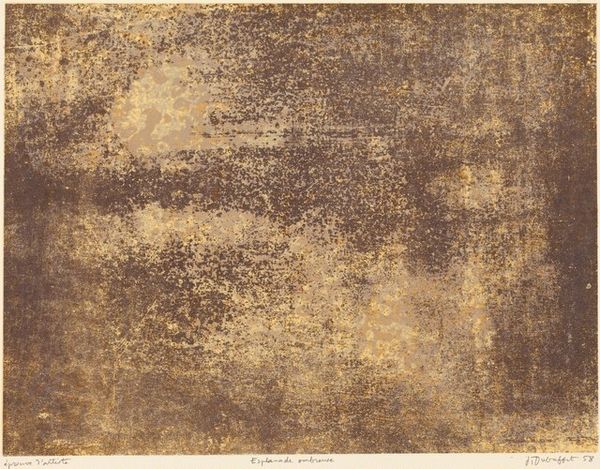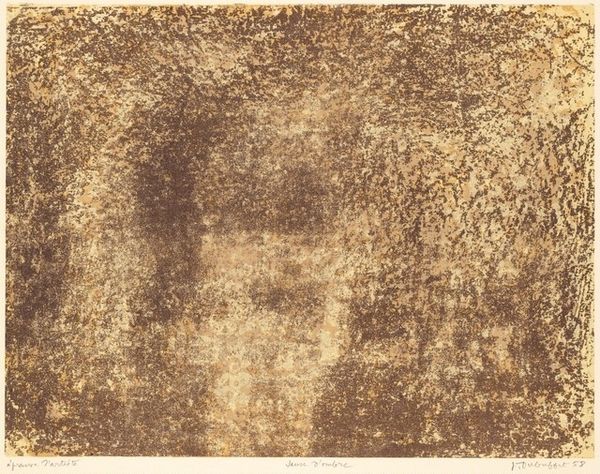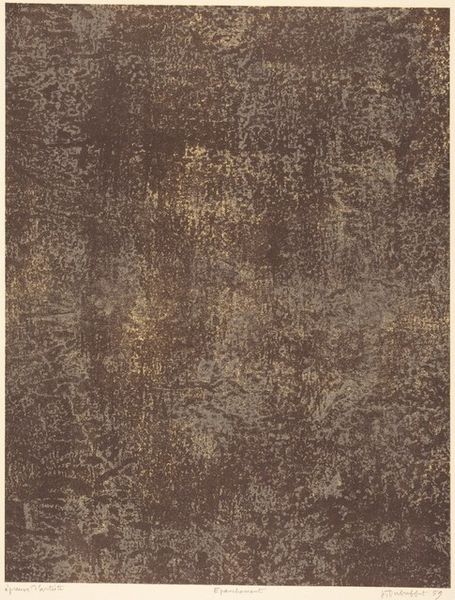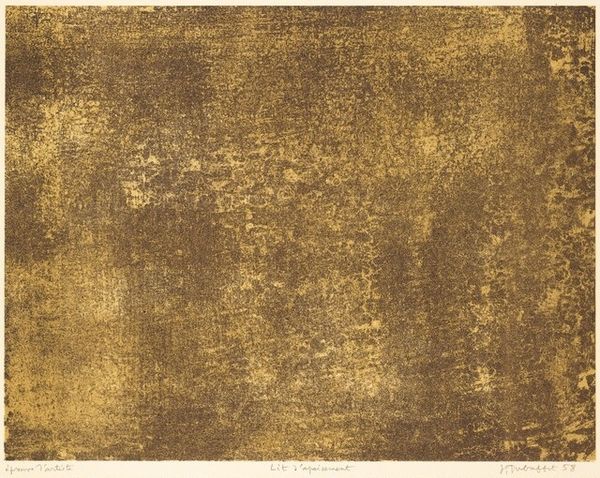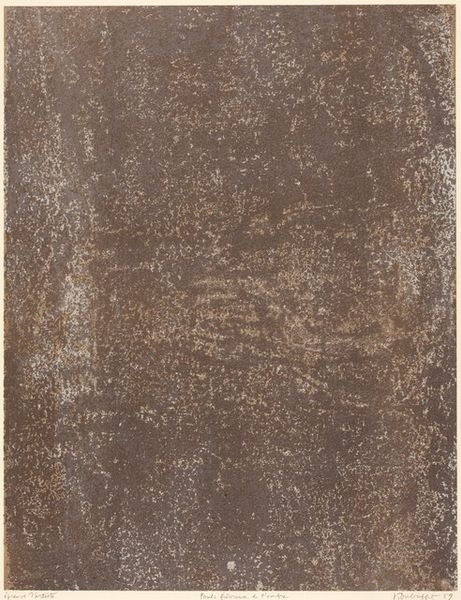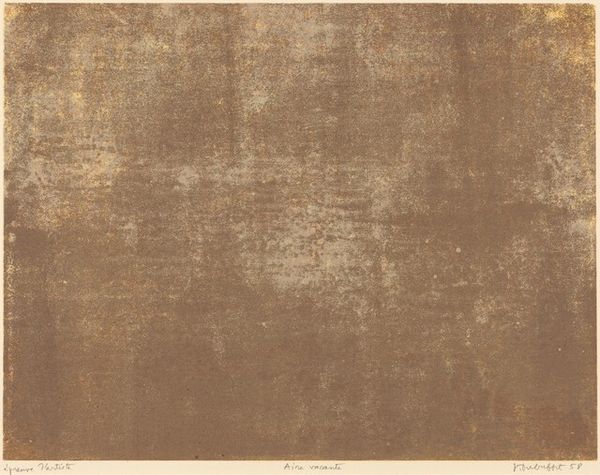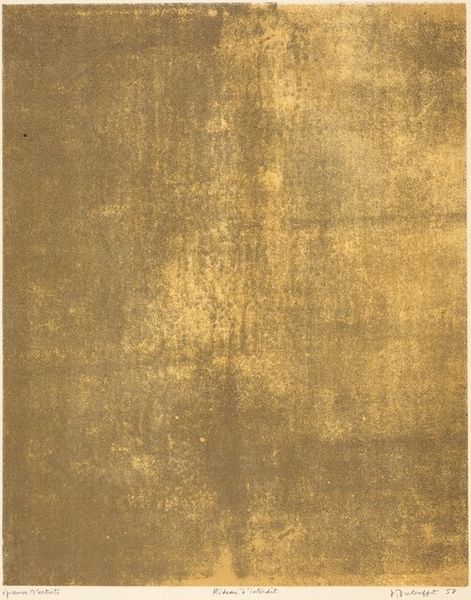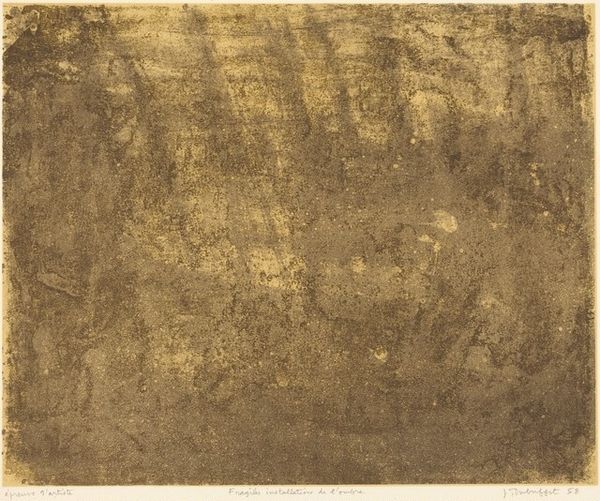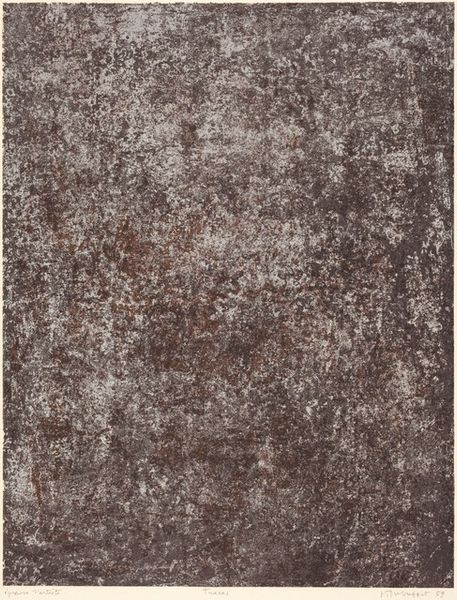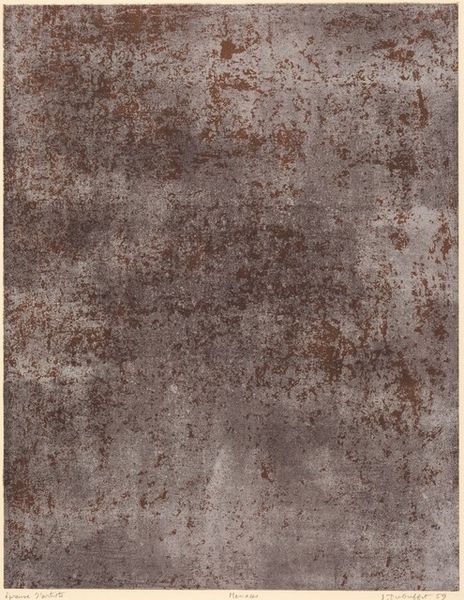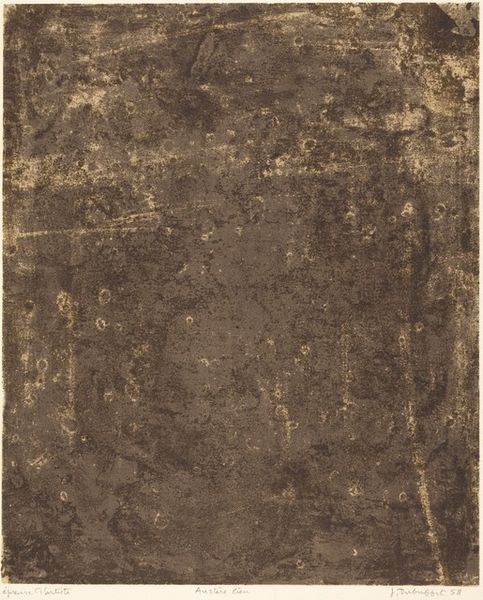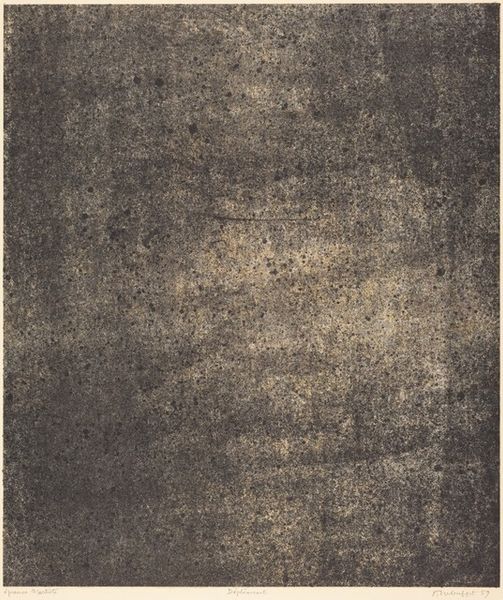
#
organic
# print
#
abstract pattern
#
organic pattern
#
art-informel
#
matter-painting
#
natural texture
#
organic texture
Copyright: National Gallery of Art: CC0 1.0
Editor: This is Jean Dubuffet's "Sol becqueté," created in 1958. It's a print, and the texture just leaps out at you! It reminds me of cracked earth or some kind of primordial soup. What stands out to you when you look at this piece? Curator: The historical context is key. Dubuffet was a major figure in Art Informel, a post-war movement that rejected classical ideals. The very title, "Sol becqueté" which translates to "Pecked Ground," pushes against idealized landscapes. It's less about representing nature and more about the materiality of the earth itself, wouldn’t you agree? Editor: I definitely see that. The surface has such an aggressive, almost violent texture. Curator: Precisely! Think about the socio-political climate of the time. The war's devastation was fresh, traditional values were being questioned, and artists were exploring new ways to express raw emotion and experience. Dubuffet championed what he called "Art Brut," art created outside the academic tradition, raw and untamed. He was deeply critical of elitist artistic circles. Do you think he was successful in his aims? Editor: It's powerful stuff. It makes you think about beauty in a completely different way. You can feel his disgust with the established order and this need to go for something radically different. I wonder if some found it ugly at the time? Curator: It challenged conventional beauty, absolutely, aiming instead for an authentic rawness that resonated with the anxieties of the post-war era. A radical departure, indeed. This dialogue about the social meaning of art gives me new angles for my next paper! Thanks.
Comments
No comments
Be the first to comment and join the conversation on the ultimate creative platform.
